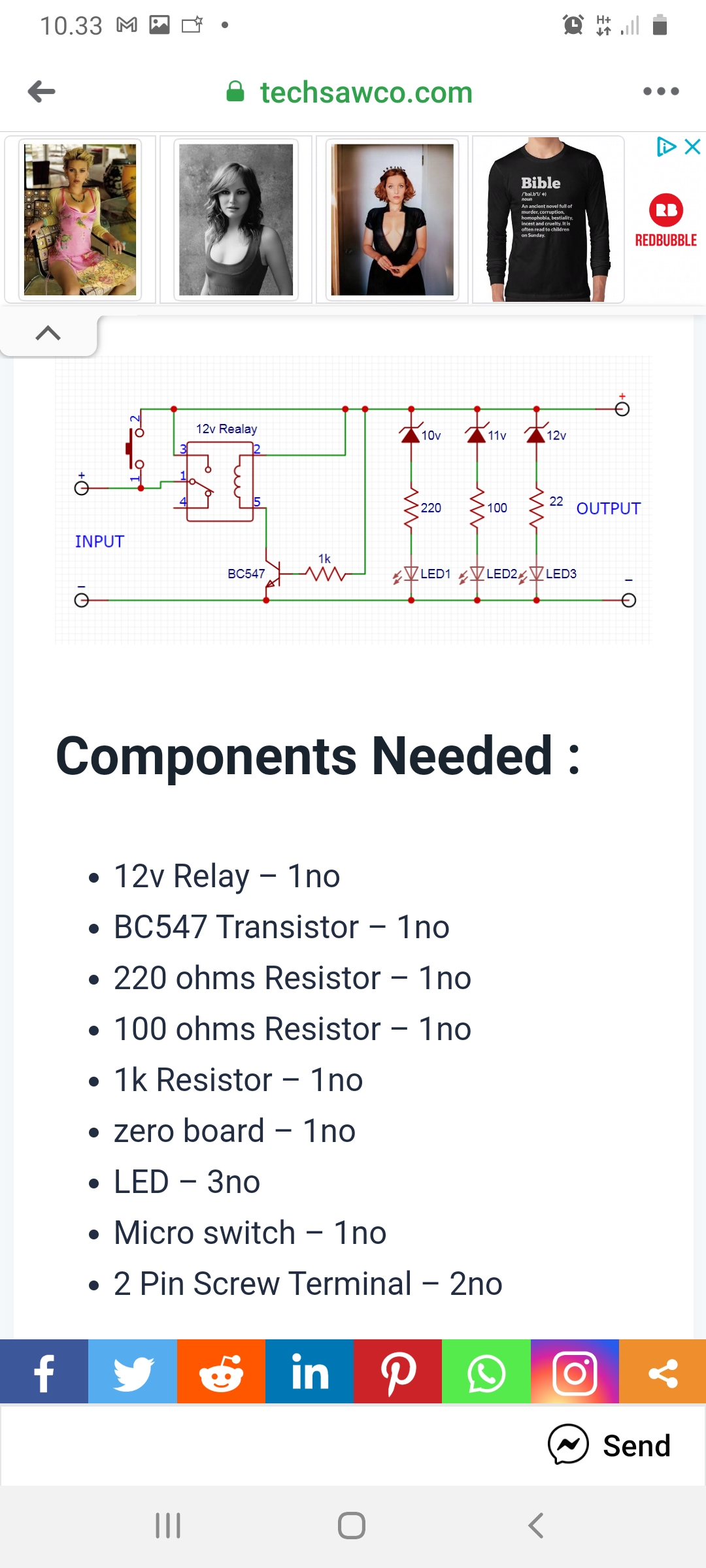Facebook post at https://www.facebook.com/groups/electronichobycircuits/permalink/3743513689006646/ advertises this circuit idea:
Amazing Idea With Relay & BC547 Transistor
https://techsawco.com/amazing-idea-with-relay-bc547-transistor/
I see this circuit much less than amazing.
“This circuit is used as voltage level indicator and short circuit protection circuit.”
Voltage level indicator idea is feasible. The “short circuit protection circuit” does not live up to the promises – can work on some conditions (enough resistance from power source to circuit) and fail catastrophically on other (circuit directly connected to 12V car battery).
Seems ro be basically workable idea. The 12V LED is pretty sensitive to overvoltage, meaning if input voltage rises just few volt above planned 12V, that LED will be soon fried.
“In this circuit, when the output wire is short, the power is cut.”
The power is only cut if the voltage coming in to the circuit drops due short circuit enough for relay coil to “dop”. If there is no such voltage drop, the “protection” circuit does not work and will pass short circuit current to load until it fails catastrophically with smoke.
If you try to to turn on power to short circuit, the small start switch will “let the smoke out” easily.
The use of BC547 makes it pretty much useless component here and is not properly protected agains inductive kickback from relay coil.
Earlier related post:
https://www.epanorama.net/blog/2020/08/23/short-circuit-protection-relay-circuit-fail/

2 Comments
Tomi Engdahl says:
Say Goodbye to Glass Fuses / 3 Excellent Short Circuit Protection
https://www.youtube.com/watch?v=mMceemkVEyM
0:08 inductor and mosfet
3:39 BD139 and mosfet
7:00 limit set by relay
viewer comments:
the circuit are very nice and great in many applications, but not for all areas. Such components sometimes break through and the current can then no longer be separated. The safest solution is still a fuse or a mechanical circuit breaker.
Awesome, thanks for sharing
However, in the schematic of the third circuit the polarities of both the LEDs are incorrect.
It is much more correct to use both a glass fuse and these circuits together.
Although, if you are not afraid of fire and have a lot of money to buy a new home, then ignore my comment.
Cool over current protection. And it’s adjustable
Tomi Engdahl says:
Bad unreliable design. There is no real current measuring, this circuit cuts out when voltage drops below certain adjustable value. At what current it happens depends heavilt on the wiring resistance and power source internal resistance (which can vary). And some other issues
https://www.epanorama.net/blog/2020/11/08/short-circuit-protection/
Short Circuit Voltage Protector Circuit With Ampere Rule and Buzzer Alarm
#electronic #protector #circuits
#overload #amperage #equipment
#tutorial #guide #solution #servive
https://www.facebook.com/share/r/12GK9YuD7Lt/